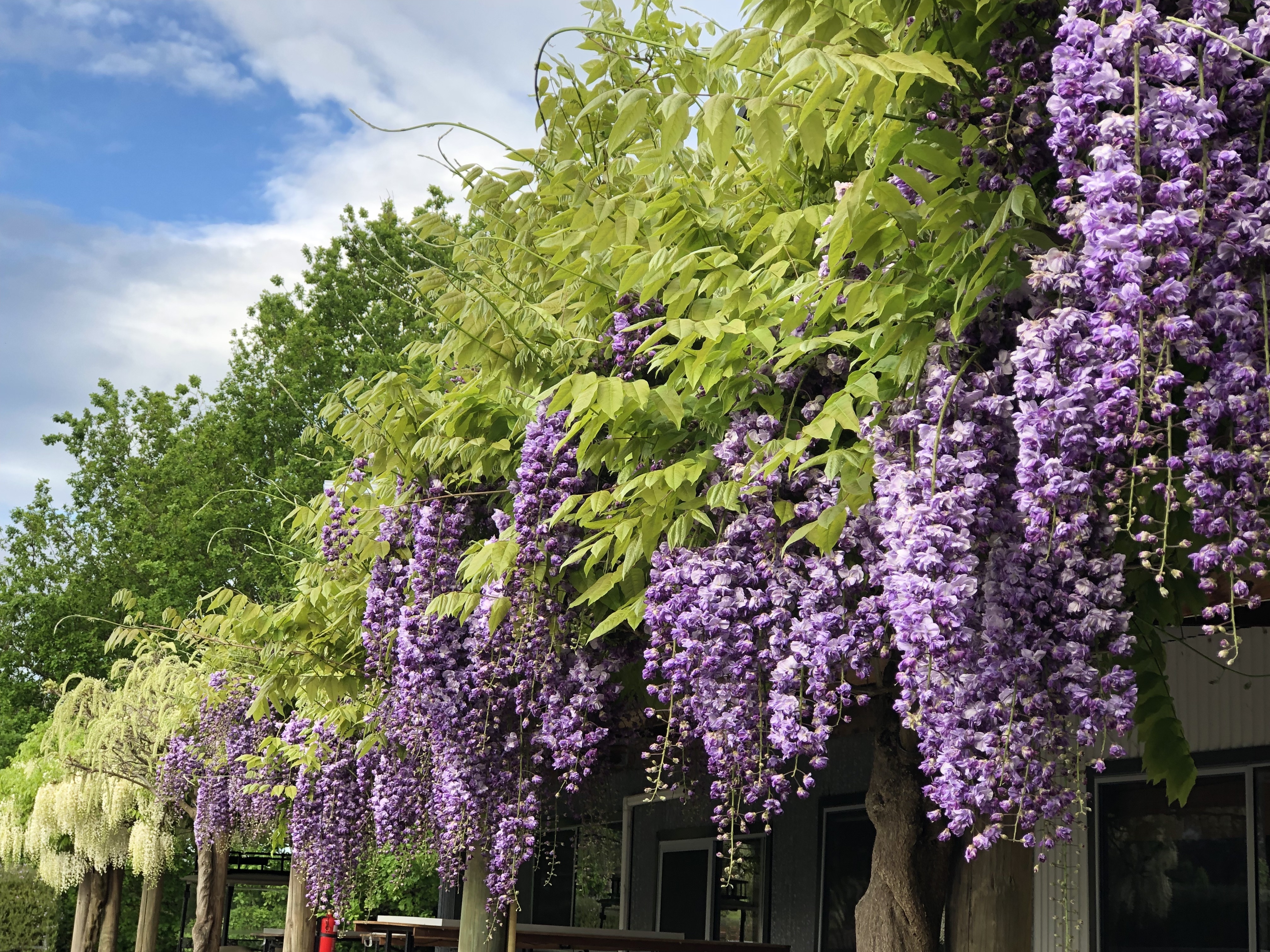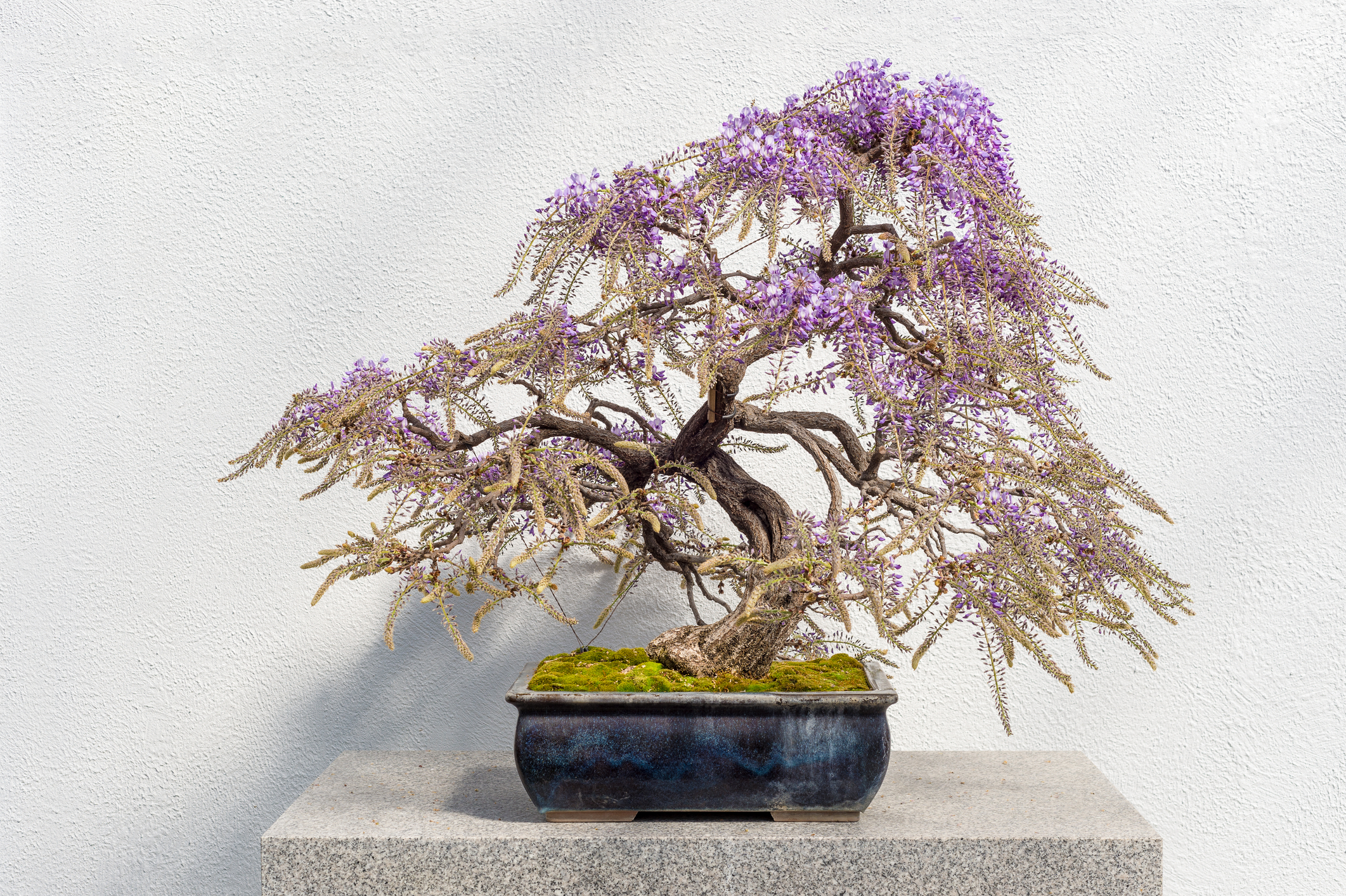Beloved wisterias
Wisteria are fast-growing, woody, deciduous vines known for their stunning, fragrant flower clusters that bloom in spring. Beloved for their romantic, cascading blossoms in shades of purple, violet, blue, pink, or white, wisterias are a striking addition to gardens, arbors, pergolas, and walls. Popular species include Wisteria sinensis (Chinese Wisteria) and Wisteria floribunda (Japanese Wisteria).
Wisteria flowers attract a variety of pollinating insects, while their dense, woody branches provide ideal nesting spots for birds.
If you’ve watched the Netflix Bridgerton series, you may have caught a case of “Wisteria Hysteria". The facade of the Bridgerton family home—filmed at Ranger’s House in Greenwich, UK—is famously draped in (mostly artificial) cascades of magnificent purple wisteria.

Growing tips
Wisteria vines are vigorous climbers, with mature plants capable of reaching heights of up to 20 meters and spreading laterally as much as 10 meters, depending on the species and growing conditions. Given their potential size and weight, wisterias require a sturdy support structure. They are ideal for training over pergolas, strong trellises, porticos, arbours, along a fence or verandah edge.
Train on a wall, through a tree, as a standard, grow in a pot, or with careful cultivation create a bonsai or a penjing (a potted scene, a form of bonsai).

Sunlight and soil
Wisteria thrives in full sun and well-drained soil. For best flowering, a location with at least six hours of direct sunlight per day is recommended. While the plant can tolerate a range of soil types, it performs best in moderately fertile, moist, and well-draining soil. Once established, wisteria is fairly drought hardy and can tolerate frosts, though young plants may benefit from some protection in colder climates.
Maintenance and pruning
One of the most important aspects of wisteria care is pruning. Without regular pruning, the plant can become unruly and may flower poorly. Prune twice a year—once in summer to control excessive growth and again in winter to shape the plant and encourage more blooms.
In the right setting, with proper support and care, wisteria can provide decades of breathtaking beauty and seasonal interest in the garden.
Five reasons to grow Wisteria:
- Stunning spring blossoms – Wisteria produces cascades of fragrant, pea-like flowers in shades of purple, blue, pink or white, creating a breathtaking display each spring.
- Natural shade and screening – This vigorous climber can drape over pergolas, arbors, or fences, providing cool, dappled shade in summer and a beautiful privacy screen.
- Long‑lasting structure – With proper pruning, Wisteria develops a strong woody framework that stands for decades, adding architectural interest to your garden year‑round.
- Wildlife magnet – The fragrant flowers attract bees, butterflies, and nectar-feeding birds, supporting pollinators and adding life and movement to your outdoor space.
- Low‑maintenance once established – After its initial training and pruning, Wisteria requires minimal care and drought tolerance, making it a rewarding choice for both novice and experienced gardeners.

References include:
Valder, P. (1996) Wisterias: a comprehensive guide. Florilegium, Balmain NSW.
Valder, P. (1999) The garden plants of China. Florilegium, Balmain NSW.
Images 1&2 copyright Heritage Fruit Trees 2025
Image 3 Bonsai
